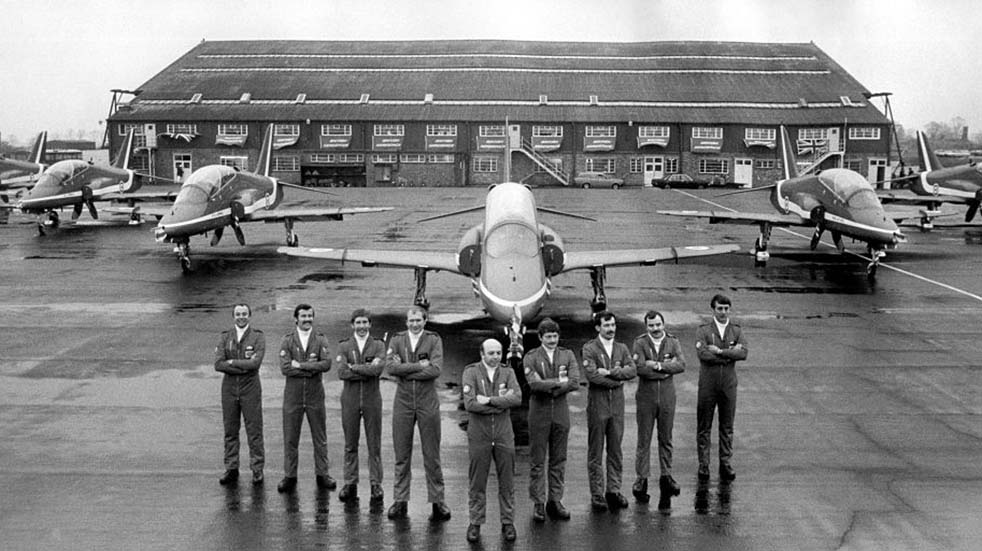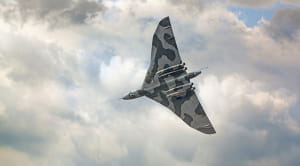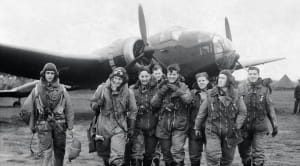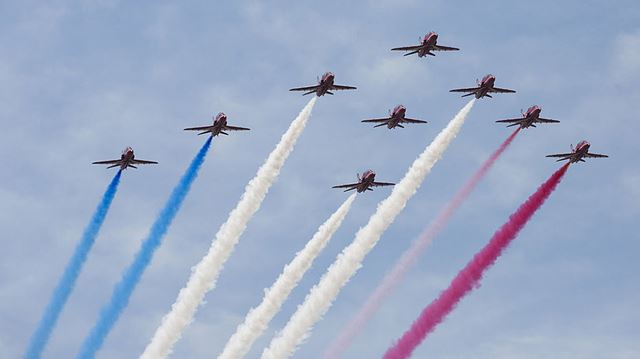
To tide you over until the postponed Boundless members' event takes place in 2021, here’s a look at how the RAF’s brave and brilliant aerobatic display team took to the skies
Like bonfire night, conkers and Sunday roasts, the Red Arrows occupy a special place in the collective consciousness of the UK – one that typically transcends societal, cultural and political divisions.
Almost everybody has a vivid childhood memory of seeing, or yearning to see, those nine readily recognisable jets roaring over the horizon, locked in symmetrical formation and leaving vibrant red, white and blue ribbons of vapour in the sky.
Numerous display teams blazed a trail above Britain before the Royal Air Force Aerobatic Team debuted in 1964, but the Red Arrows – as they became known – soon acquired iconic status, bringing together the RAF’s elite pilots and cutting-edge technology.
The story of how this unique squadron was formed is as gripping as the aerial displays the team perform all around Britain (and occasionally beyond), and you’ll be able to hear it first-hand at next year’s Boundless event (for more information, see bottom of page). In the meantime, we present our own tribute to this incredible collective.
Weekly air shows
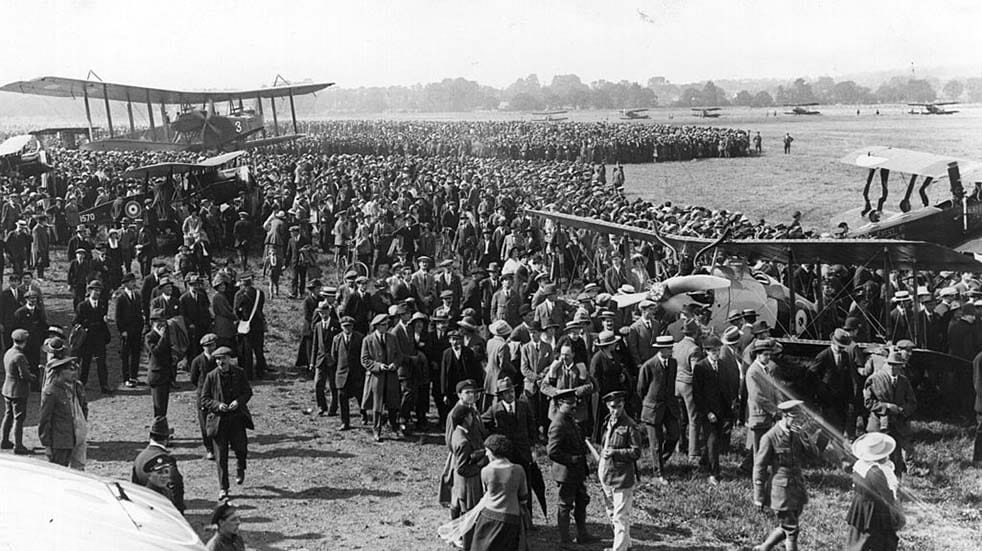
Many of the UK's earliest air shows were held at Hendon Aerodrome
Air shows have pulled big crowds ever since the advent of human flight. English aviation pioneer Claude Grahame-White began holding weekly air displays at Hendon Aerodrome in Colindale (now home to London’s RAF Museum) in April 1912, and staged the first Aerial Derby in June of that year, a plane race witnessed by millions across the capital.
It was impressive enough, but the British public’s obsession with air displays reached new heights after the RAF was born in April 1918. During World War One, the sky had become a battle theatre for the first time. Air aces in Sopwith Camel biplanes were lionised after performing feats of heroism while defending people’s homes from the horror of aerial bombing and duelling with enemy pilots in deadly dogfights over the Western Front.
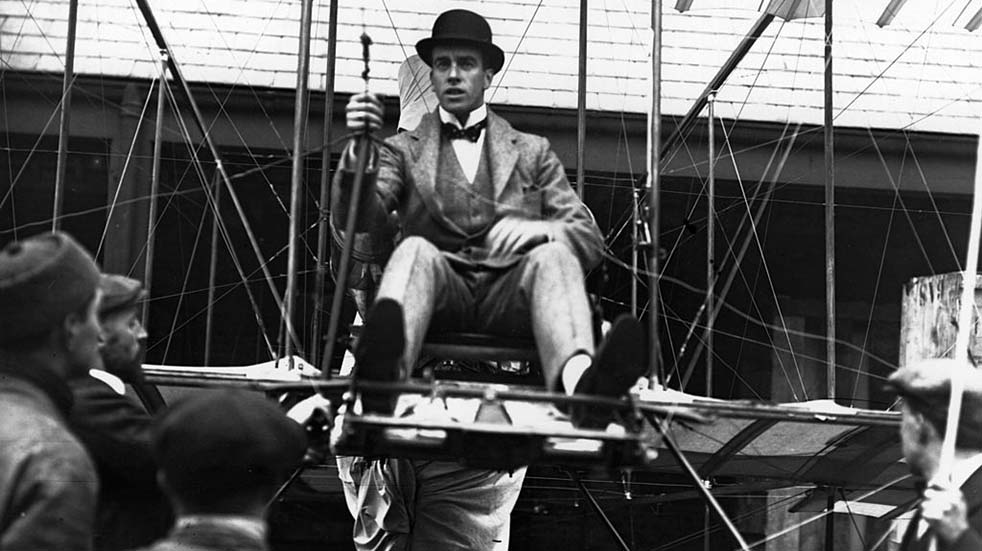
Claude Grahame-White was instrumental in bringing aerial displays to the masses
The first Royal Air Force Aerial Pageant in 1920 attracted 40,000 paying punters (not including all the spectators strategically placed in surrounding vantage points), and by 1922, Hendon was hosting annual aerial shows that drew hordes of up to 195,000 excited enthusiasts.
Across the Atlantic, celebrity barnstormers and privately owned flying circuses toured with troupes of wing-walkers and pilots performing dangerous (all too often deadly) tricks. Here, too, public appetite for dramatic aerial thrills soared. The Royal Air Force Display (later renamed Empire Air Day) saw pilots flying exceptionally close to the public, staging stunts such as tying aircraft together, and using live ammunition to simulate battle scenes.
Ambitious routines
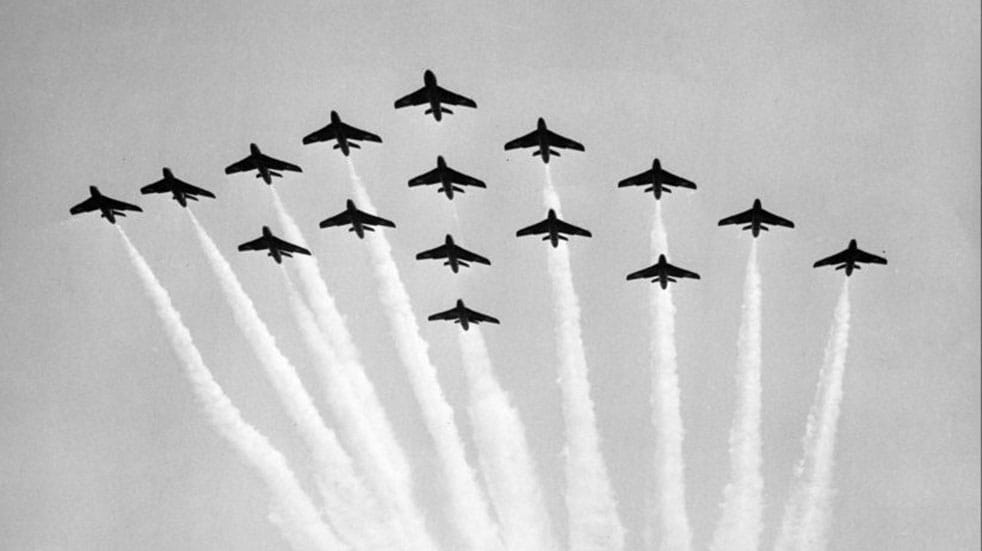
The Black Arrows completed the first ever 16-aircraft barrel roll
The Spitfires’ role in World War Two, along with the rapid evolution of the jet engine, further turbo-charged public interest in air displays. Several RAF squadrons and training schools established teams and jostled for pole position, among them the Black Arrows (111 Squadron), the Falcons, later renamed the Blue Diamonds (92 Squadron), the Firebirds (56 Squadron), the Tigers (74 Squadron), the Yellowjacks (No 4 Flying Training School, RAF Valley) and the Central Flying School’s Red Pelicans.
Teams attempted ever more ambitious routines at prestigious events such as the Society of British Aircraft Constructors’ show at Farnborough (now the Farnborough International Airshow, one of the planet’s largest aviation events). There, in 1958, the Black Arrows completed the first-ever 16-aircraft barrel roll and a loop-the-loop involving 22 Hawker Hunters in formation – setting a world record that still stands.
Engineers began employing tricks to enhance the visual experience for spectators, many of which will be familiar today. In 1963, the Red Pelicans – by then one of the RAF’s premier aerobatic outfits – were using six Jet Provost T4 planes painted a dayglo-red and fitted with a diesel-injected smoke system to leave colourful lines in the sky.
The Red Arrows are born
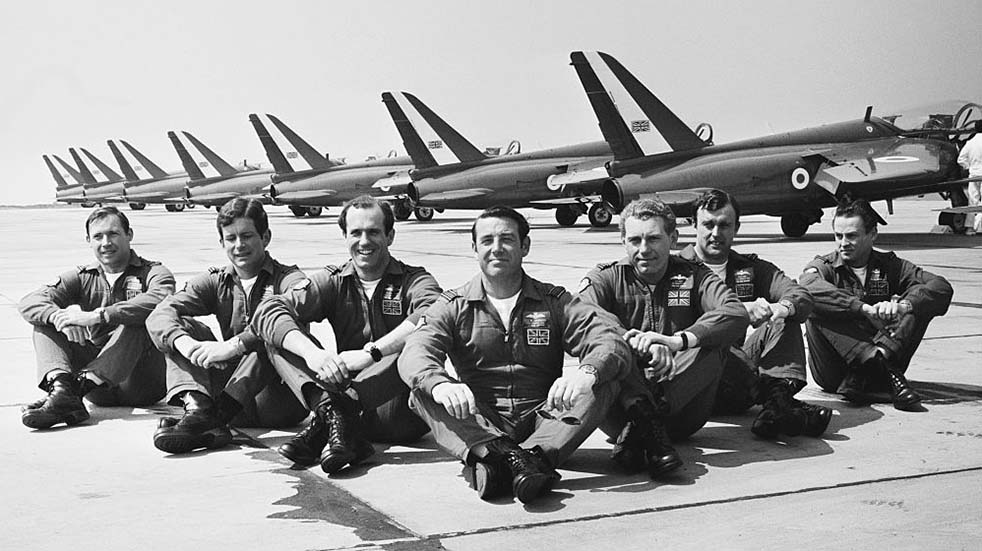
Red Arrows pilots take a break from training at Little Rissington in Gloucestershire, 1971
In 1964, concerned about the costs and time being spent by elite pilots in practising for performances rather than operations, the RAF amalgamated these display teams to form the Royal Air Force Aerobatic Team, affectionately known to the nation ever since as the Red Arrows.
Led by Flight Lieutenant Lee Jones, the team was initially based at the Central Flying School at RAF Little Rissington in Gloucestershire. They flew seven Folland Gnat trainers, inherited from the Yellowjacks and repainted red to make them more visible in the sky.
The second part of their popular name, a legacy of the Black Arrows, was confirmed in print after their first public appearance, when a French journalist at France’s National Air Day display described them as Les Fleches Rouges.
In 1968, under Squadron Leader Ray Hanna, the team was expanded to pilot nine planes and their now-famous Diamond Nine formation was developed. This appears on the Red Arrows’ crest, beside the motto ‘Éclat’ (excellence).
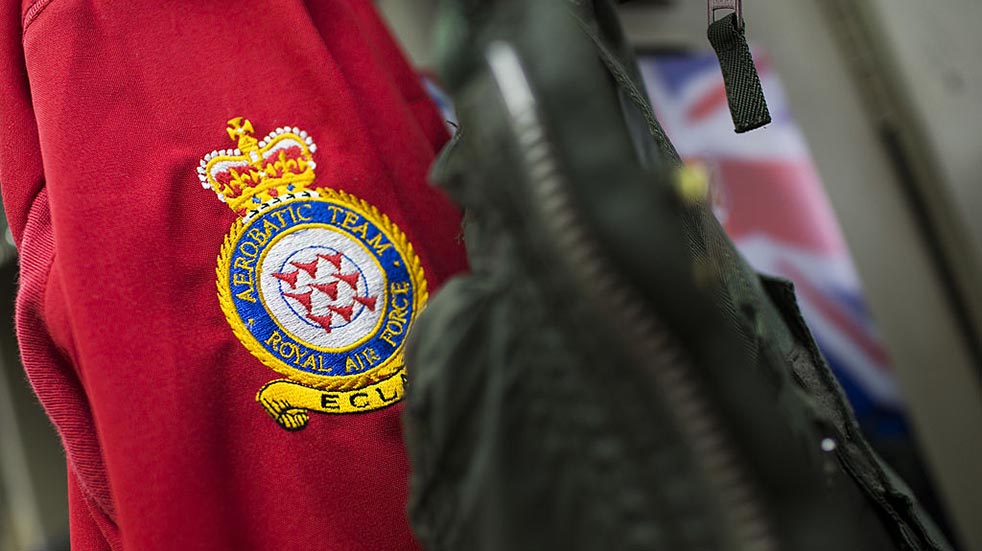
Bearing nine aircraft in close formation, the iconic crest is worn by Red Arrows pilots
The BAE Systems Hawk (a modified version of the RAF’s fast jet and weapons trainer) replaced the Gnat for the 1980 season and is still the team’s plane today, although the technology beneath the red panels has been upgraded multiple times.
Applying for the Red Arrows
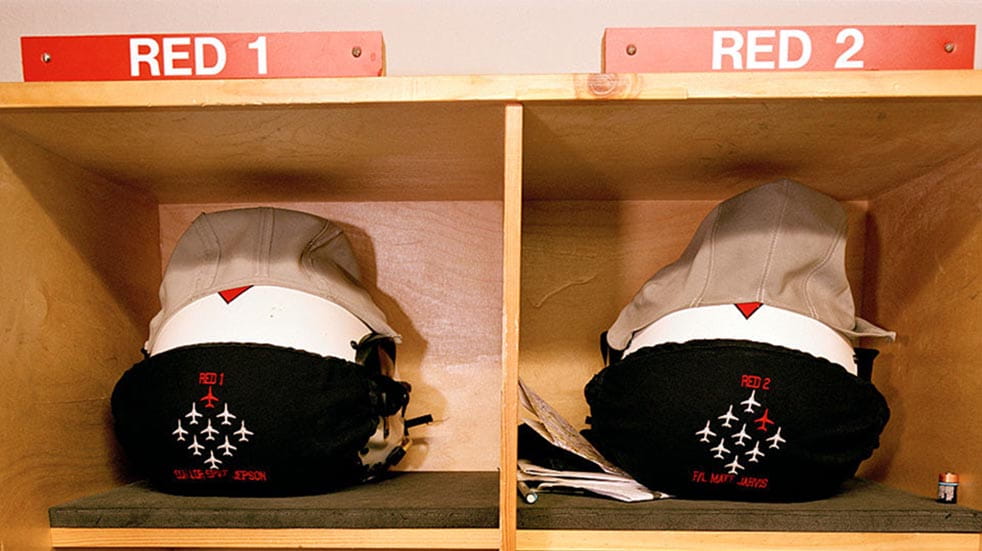
Each Red Arrows pilot has their own storage space for flying gear
The talent in the team is replenished regularly too, but it consistently comprises some of the RAF’s best pilots. They each complete three-year tours of duty with the squad. Usually, three members leave and return to the front line, instructional roles or staff duties at the end of each season, with a very select few returning to take up the position of team leader.
To apply for a position, pilots must have been assessed as above average while flying a fast jet on at least one operational tour, and have accrued a minimum of 1,500 flying hours. The final three are selected from a shortlist of nine applicants after a week that includes a flying assessment, an interview and peer assessment.
This is, after all, a job for the best pilots. During displays, when planes reach speeds of 400mph and pass within 1.8 metres of each other, both pilot and machine experience extreme forces. During the Vixen Break, one of the team’s signature manoeuvres, they experience 7g, which is alarmingly close to the 8g structural limit of the aircraft,
Supporting good causes
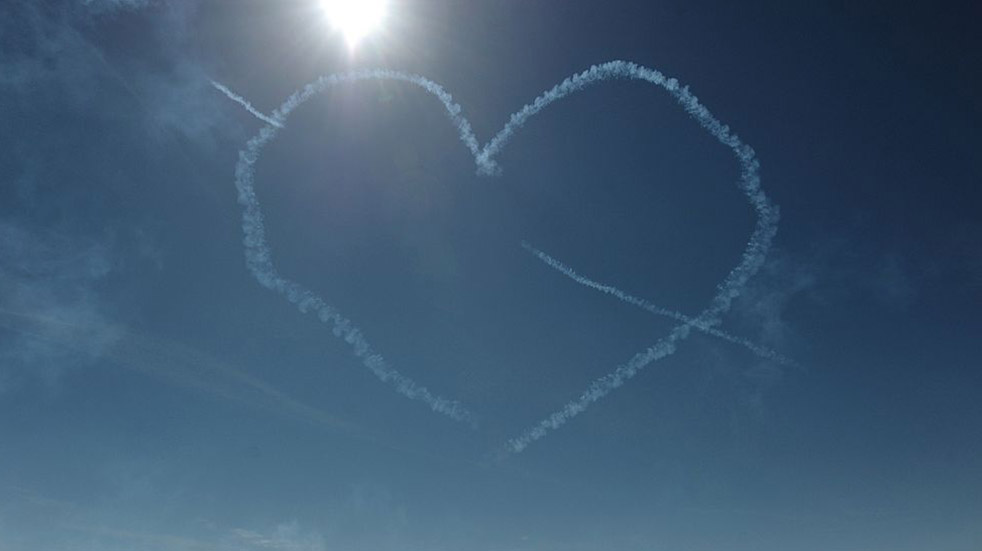
This poignant symbol was left in the sky by the Red Arrows during 2014 D-Day commemorations in Portsmouth
Despite widespread speculation, the Royal Air Force Aerobatic Team has survived several major incidents, increasing restrictions at air shows and numerous spending reviews – saved by its national-symbol status (no politician wants Red Arrow blood on their hands) and role as a major recruiter for the RAF.
In April, after Britain had been in lockdown for a month, the Red Arrows resumed practice flights above RAF Scampton (pilots have to fly at least once every 31 days to stay sharp). This created positive, phoenix rising-style headlines nationwide and prompted requests from the public for the planes to make vapour-trail rainbows or use blue smoke to show support for the NHS.
Suddenly, after weeks of surreal social distancing, people were fondly remembering the times they’d watched these nimble jet planes zipping past each other in closer proximity than they were now allowed to stand to their neighbour.
Red Arrows timeline
6 May 1965
The Royal Air Force Aerobatic Team performs its very first display, to media only, at RAF Little Rissington in Gloucestershire (then the Central Flying School).
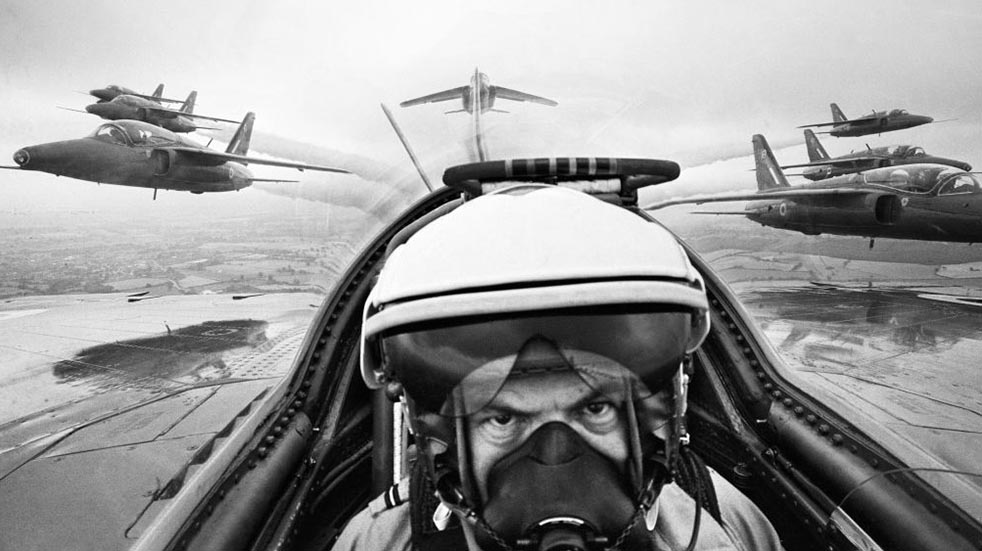
Daily Herald photographer Ron Burton joins the Red Arrows for a training exercise, 1965
9 May 1965
After its inaugural public display at the French National Air Day, the French press christens the team Les Fleches Rouges – the Red Arrows.
15 May 1965
The Red Arrows perform to the British public for the first time at Biggin Hill Air Fair.
1966
The Red Arrows move to RAF Kemble (now Cotswold Airport).
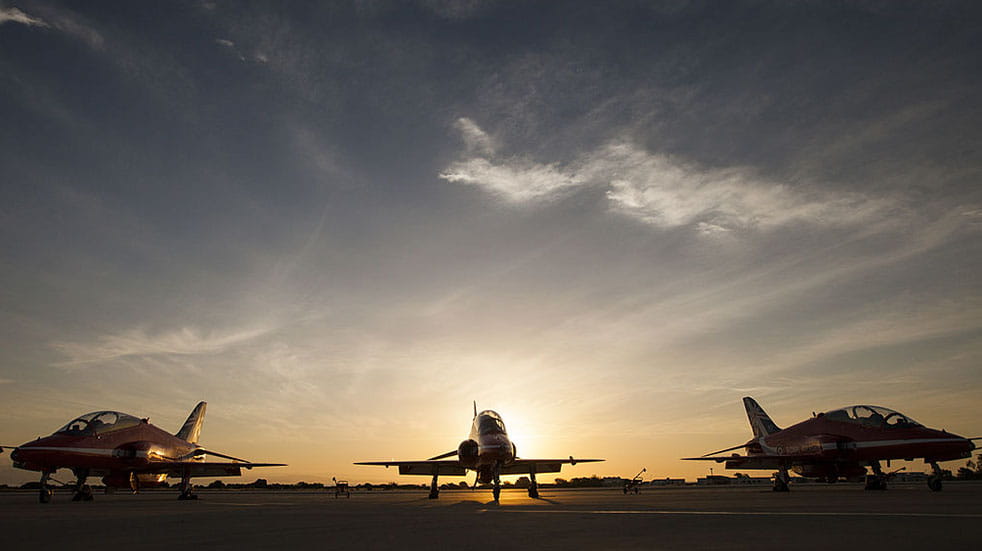
Red Arrows jets parked up in anticipation of their next intrepid adventure
1968
With Sqn Ldr Ray Hanna as leader, the display team expands to nine.
1979
Having performed 1,292 times in the Folland Gnat, the team switches to the BAE Hawk, which is first flown during the 1980 season. It’s still flown by the Red Arrows today.
Red Arrows pilots proudly show off their new BAE Hawk aircraft, 1979
1983
The Red Arrows relocate from RAF Kemble to RAF Scampton in Lincolnshire, the base made famous by its role in the 1943 Dambusters raid.
2006
The Red Arrows perform their 4,000th display at RAF Leuchars Battle of Britain Air Show in September.
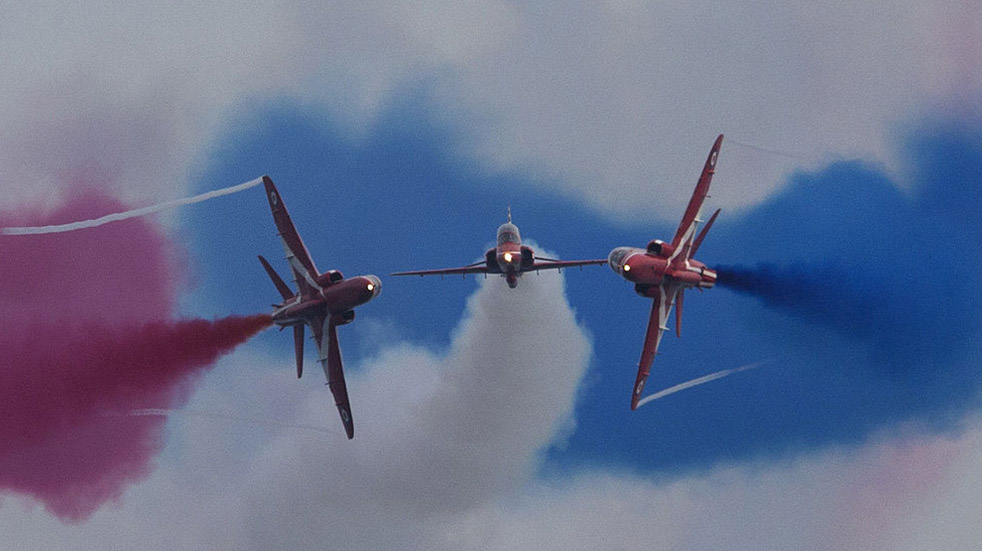
Pilots need an incredible amount of dexterity to pull of such daring stunts
2012
After two tragic and fatal accidents during the previous display season, the team is temporarily reduced to seven planes before returning to nine for the 2013 season.
2014
The Red Arrows celebrate 50 years as a display team, returning to RAF Fairford for the Royal International Air Tattoo. The planes sport anniversary markings on their tails for the entire season.
2016
The team embarks on a tour of Asia-Pacific and the Middle East that includes its first-ever air display in China.
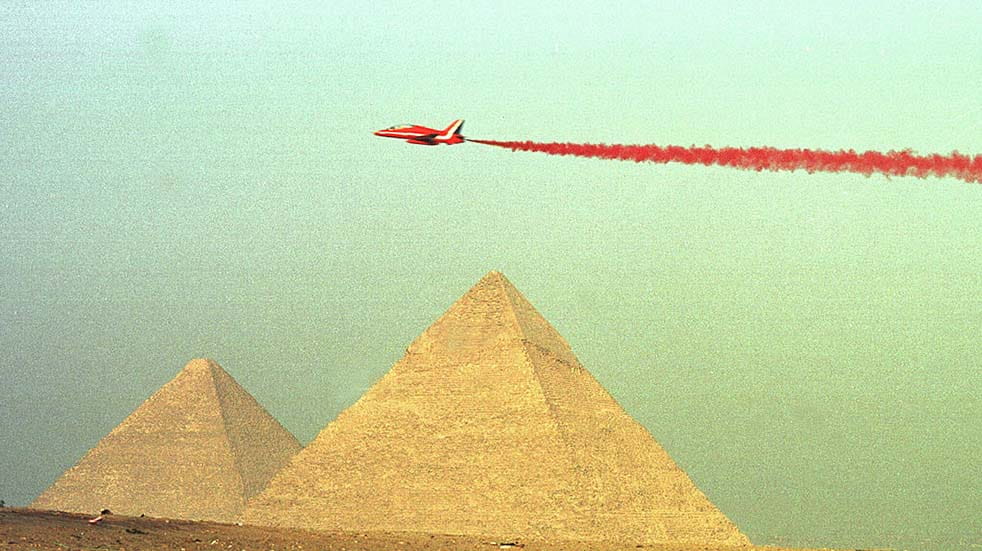
A Red Arrows jet leaves a trail of red smoke as it flies over the Pyramids at Giza, Egypt
2019
Taking on its biggest tour of the US and Canada to date (and the first in more than a decade), the team performs 21 displays and 30 flypasts.
2022
As announced in May, RAF Scampton will close and the Red Arrows will be relocated to nearby RAF Waddington.
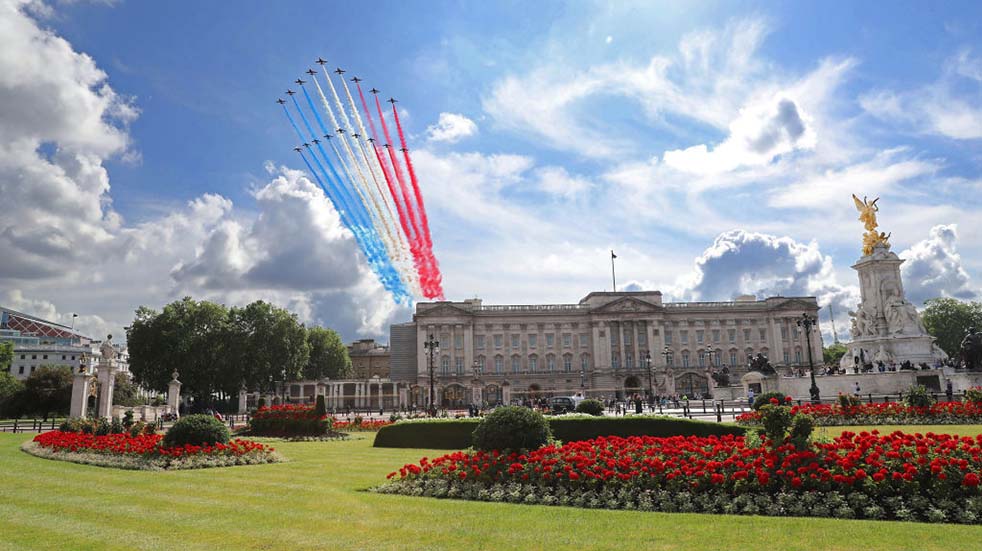
The Red Arrows, along with planes from the Patrouille de France, fly over Buckingham Palace during the 2020 VE Day celebrations
Do more with Boundless: Red Arrows member event
We know how excited many of you have been about our exclusive Red Arrows member event planned for this October – the ticket sales alone confirmed its popularity. However, to ensure everyone’s safety, and so we can be as certain as possible that the event will definitely take place and give it the recognition it deserves, we will now hold it in 2021.
We appreciate this will be disappointing for some, but your safety is our top priority. As originally planned, this event will raise money for the RAF Benevolent Fund. If you’d like to be first in line for tickets to this event when they’re released, please sign up to the waiting list.
We'd love to hear from you
Do you have any memories of the Red Arrows that you'd like to share? Leave us a comment on Facebook or Twitter.
All photos: Getty Images


